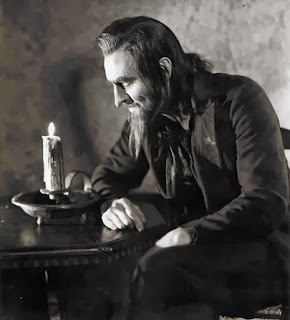 |
| Mesmerizer. Jack Barrymore |
John Barrymore (Broadway’s Orson Welles) in Svengali (1931) unpacks theatrical traditions and his own sly, self-referential archness into a variety of grand gestures—the sing-song accents, interrogative upturns, and squeaky upper registers of the Eastern European Jew; the static postures and bearing of the angular nobles in the Eisenstein historical epics (Barrymore is made up to resemble Nikolay Cherkasov in Ivan the Terrible); and the tortured self-doubts and sadism of the Shakespearean villains. Barrymore is so audacious that all these styles blend seamlessly—he gets to the essence of the art of acting: creating a character that is both lifelike and larger than life. When his great death scene occurs, you expect him to spring uncannily back to life. And the special effects in the mesmerism scenes have sensual heat: Svengali’s eyes glow like molten metal.
No comments:
Post a Comment